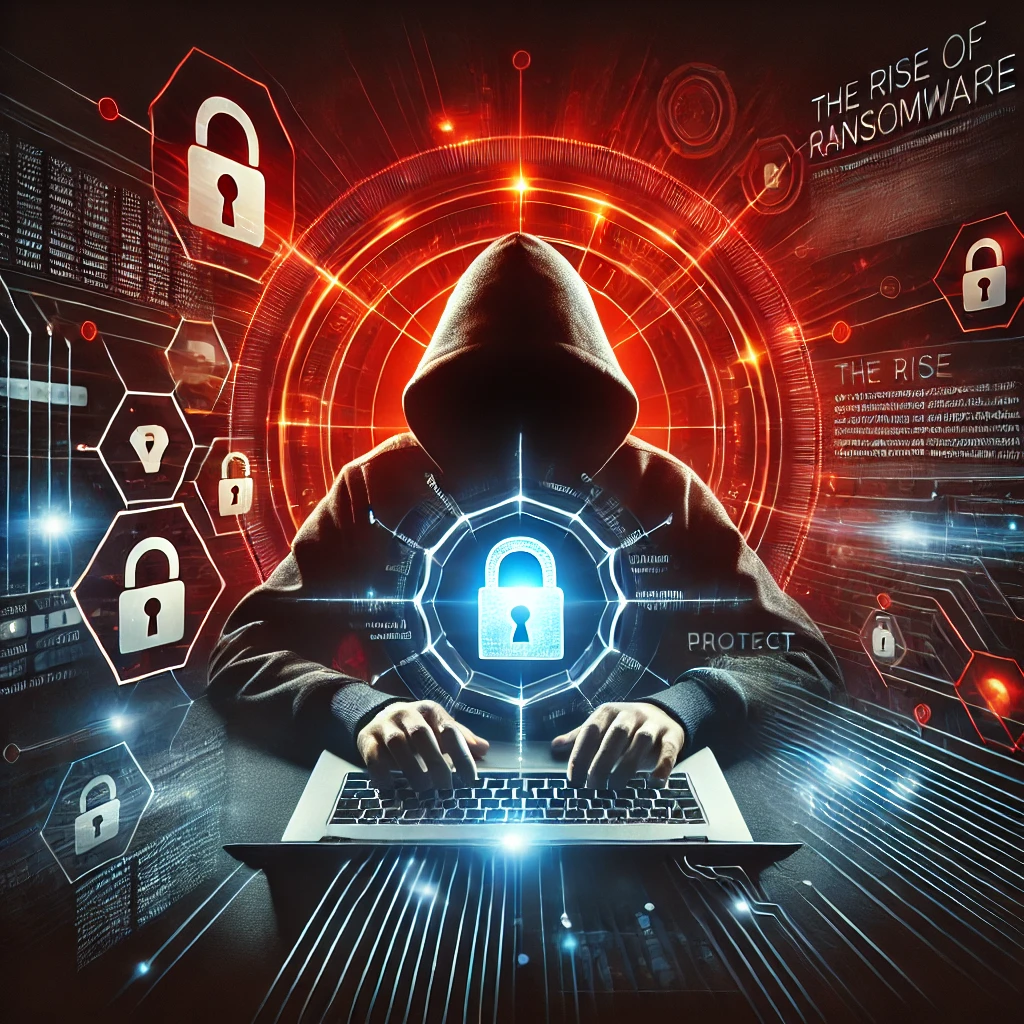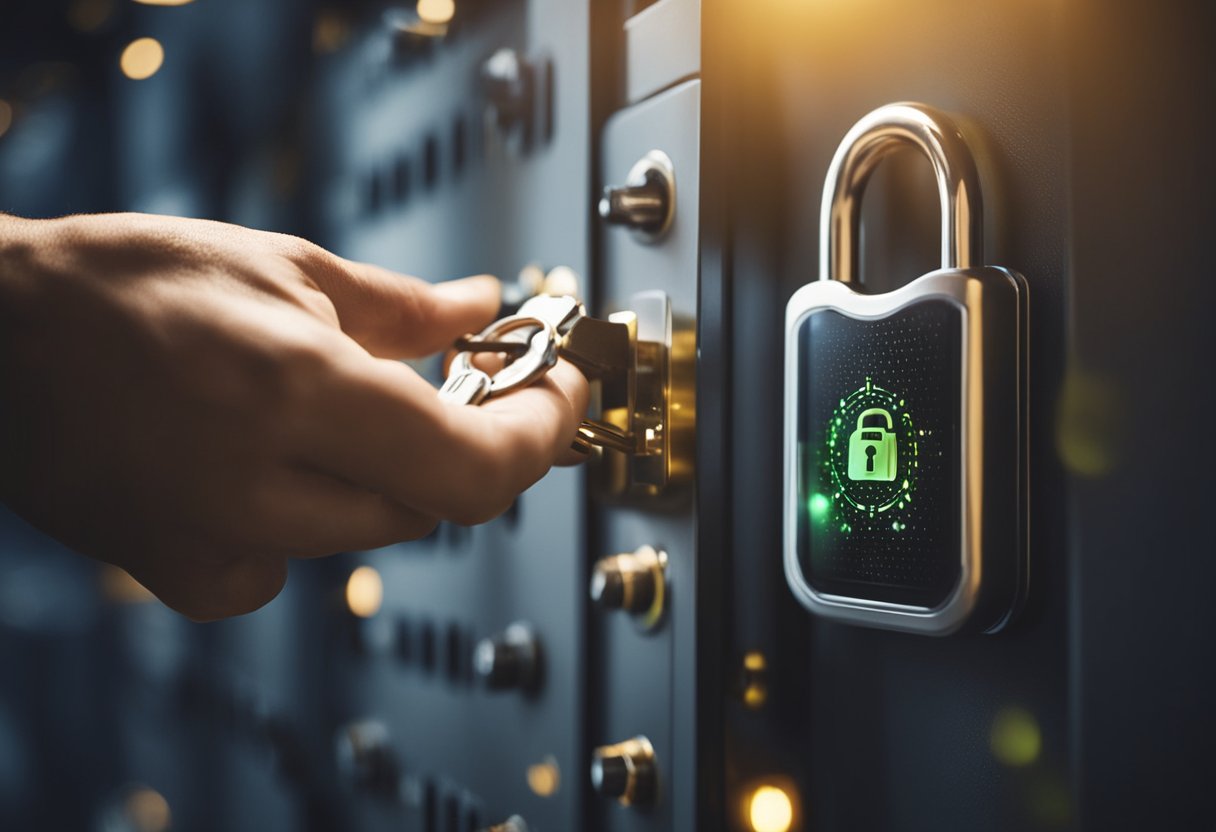- Current State of Cybersecurity
- Technological Advancements and Trends
- Emerging and Persistent Challenges
- Strategies and Frameworks for Enhanced Security
- The Role of Governance, Risk, and Compliance
- The Role of Governance, Risk, and Compliance
- Technological Advancements and Trends
- Future Predictions and Preparations
- Advancing the Cybersecurity Workforce
- Evolving Security Considerations for Businesses
The future of cybersecurity and the landscape of cybersecurity is evolving rapidly. As technology advances, so do the tactics employed by cybercriminals. In the next five years, organisations can expect a shift towards increased use of artificial intelligence and machine learning to enhance security measures and combat sophisticated threats.

Another significant trend is the growing emphasis on personal data protection and privacy regulations. Businesses will need to adapt to new laws and consumer expectations about how their information is handled.
Cybersecurity professionals will also face a talent shortage as demand for skilled workers continues to rise. Keeping up with these trends will be crucial for businesses aiming to protect their digital assets efficiently.
Current State of Cybersecurity

The current landscape of cybersecurity shows rapid changes driven by various factors. The rise in cyber threats is significant, and remote work has influenced security measures. Additionally, the costs associated with cyber insurance are increasing, affecting how organisations manage their risks.
The Evolving Threat Landscape
In 2025, the threat landscape continues to evolve with more sophisticated cyber attacks. Ransomware remains a major issue, impacting businesses of all sizes.
- Types of Threats: Common cyber threats include phishing, malware, and denial-of-service attacks.
- Innovative Tactics: Attackers are increasingly using artificial intelligence to enhance their methods.
The global cost of cybercrime is expected to reach trillions as more organisations fall prey to these risks. Businesses must stay informed and adopt advanced security practices to combat these threats effectively.
Impact of Remote Work on Security
The shift to remote work has changed cybersecurity approaches. Many employees work from home, creating new vulnerabilities. This shift has led to an increase in targeted attacks.
- Security Gaps: Home networks often lack proper security measures compared to corporate environments.
- Training Needs: Organisations must invest in training employees on security best practices.
Remote workers are prime targets for cybercriminals, making it crucial for companies to strengthen their security protocols and maintain a secure work environment.
Rising Costs of Cyber Insurance
With the increase in cyber threats, the cost of cyber insurance is rising. Organisations seek coverage to protect against financial losses related to breaches or attacks.
- Pricing Trends: Premiums for cyber insurance have increased as claims rise due to more frequent incidents.
- Policy Limitations: Many policies now have stricter terms, reflecting the growing risk environment.
Companies are encouraged to assess their coverage needs carefully and understand what their policies include. A well-structured cyber insurance plan can safeguard against significant financial losses in an ever-changing threat landscape.
Technological Advancements and Trends

The next five years will see significant advancements in cybersecurity driven by AI, quantum computing, and blockchain technology. These changes will shape how organisations protect their data and respond to threats.
The AI and Machine Learning Revolution
AI and machine learning are transforming cybersecurity by enabling faster threat detection and response. AI-driven systems can analyse vast amounts of data to identify patterns and potential vulnerabilities.
Key benefits of AI in cybersecurity include:
- Predictive analytics: This helps predict where threats might arise.
- Automated responses: Systems can automatically react to detected threats, minimising damage.
The rise of generative AI and large language models will also enhance phishing detection. As these technologies evolve, they will provide even greater security depth for organisations.
Quantum Computing and Quantum Threats
Quantum computing poses new challenges and opportunities for cybersecurity. This technology can potentially break traditional encryption methods, leading to vulnerabilities.
Key aspects to consider include:
- Quantum threats: They could decimate the effectiveness of current security protocols.
- Post-quantum cryptography: Researchers are developing new encryption methods to counteract quantum risks.
As quantum technology advances, organisations must prepare for these shifts to protect sensitive data.
Blockchain’s Role in Cybersecurity
Blockchain technology is emerging as a valuable tool in cybersecurity. Its decentralised nature makes it difficult for hackers to manipulate data.
Advantages of blockchain in security:
- Data integrity: Once information is recorded, it cannot be easily altered.
- Enhanced transparency: All transactions are visible to authorised parties, reducing fraud.
As more companies adopt blockchain, it will likely become a standard practice for securing sensitive information and facilitating secure transactions.
Emerging and Persistent Challenges

As cyber threats evolve, organisations face new and ongoing hurdles. The challenges of securing critical infrastructure, combating ransomware and social engineering, and addressing insider threats and human error are paramount. Each of these areas requires focused attention and effective strategies to minimise risks.
Securing Critical Infrastructure
Securing critical infrastructure is vital for national and economic safety. This includes utilities, transportation, and health systems. Many of these services rely on outdated technology, making them more vulnerable to cyber attacks.
Recent incidents have shown that attacks on these systems can cause significant disruption. To protect against these threats, organisations must invest in updated security protocols and regular system updates. Collaboration with government agencies can also enhance protection and response strategies.
Combatting Ransomware and Social Engineering
Ransomware attacks have become more frequent and sophisticated. Attackers use social engineering tactics to trick individuals into giving up sensitive information or downloading harmful software.
Companies must train employees about the risks and signs of phishing scams. Implementing strong security measures like multi-factor authentication can reduce vulnerability. Regular data backups are essential to ensure that businesses can recover quickly in case of an attack.
Tackling Insider Threats and Human Error
Insider threats are a growing concern for many organisations. Employees, whether intentionally or unintentionally, can lead to data breaches or security lapses.
To tackle this issue, organisations should enhance their hiring processes and conduct thorough background checks. Regular security training can help employees understand their responsibilities in maintaining data security. Implementing strict access controls can also minimise the risk of internal threats, making it harder for unauthorized users to access sensitive information.
Strategies and Frameworks for Enhanced Security

To improve cybersecurity, organisations should focus on specific strategies and frameworks. Adopting modern architectures, using advanced technologies, and maintaining good cyber hygiene are key areas that need attention.
Adoption of Zero Trust Architecture
Zero Trust Architecture (ZTA) is essential for modern cybersecurity. It operates on the principle of “never trust, always verify”. This means that every request for access must be authenticated, regardless of whether it comes from inside or outside the network.
Implementing ZTA requires a few important steps. First, organisations must define their security perimeters based on sensitive data. Next, they need to continuously monitor user behaviour and access patterns. Regular updates to security policies are also vital.
NIST provides guidelines for adopting Zero Trust. Following these can help organisations minimise risks and respond effectively to breaches. Encrypting data at rest and in transit is crucial. This limits exposure even if there is unauthorised access.
Enhancing Threat Detection with AI
Using Artificial Intelligence (AI) improves threat detection significantly. AI can analyse large amounts of data quickly, identifying patterns and anomalies that human analysts might miss. This leads to faster detection of potential threats.
Implementing AI for threat detection involves selecting the right tools. These tools should integrate seamlessly with existing systems. Machine learning algorithms can then be trained to recognise unusual activity.
Moreover, AI-driven systems can reduce false positives. This allows security teams to focus on real threats instead of sifting through numerous alerts. Combining AI with traditional methods creates a stronger defence.
The Essential Role of Cyber Hygiene
Cyber hygiene refers to the basic practices that ensure a secure digital environment. Regular updates of software and systems are crucial. These updates patch vulnerabilities that attackers may exploit.
User education is another key aspect of cyber hygiene. Training employees on secure practices, such as recognising phishing attacks, can significantly reduce risks. Strong password policies should be enforced across the organisation.
Implementing multi-factor authentication (MFA) enhances security. MFA adds an additional layer, making it harder for attackers to gain access. Regular security audits help organisations maintain a secure posture and identify areas for improvement.
The Role of Governance, Risk, and Compliance

Governance, risk, and compliance (GRC) are crucial for organisations in navigating the complex landscape of cybersecurity. These strategies help ensure adherence to laws, manage risk, and promote a culture of security awareness among employees.
Navigating Regulatory Compliance
Regulatory compliance refers to following laws and guidelines that govern data protection and cybersecurity. Many sectors must comply with comprehensive regulations such as GDPR or PCI DSS.
Organisations must keep up with changes in laws and adapt their policies accordingly. This includes regular audits and assessments to identify gaps in compliance efforts. Adhering to these regulations not only avoids legal penalties but also builds trust with customers.
Risk Management and Security Best Practices
Risk management involves identifying, assessing, and prioritising risks. Effective management helps organisations maintain a robust security posture.
One essential practice is conducting regular security assessments. This includes penetration testing and vulnerability scans to discover weaknesses.
Organisations should also implement layered security measures such as firewalls and intrusion detection systems. These best practices help mitigate the effects of potential cyber threats.
Importance of Employee Training and Awareness
Employees play a crucial role in a company’s security efforts. Providing ongoing training raises awareness about various cyber threats, including phishing attacks.
Regular workshops can educate staff on recognizing suspicious emails and avoiding risky behaviour online. Using real-life examples can enhance training effectiveness.
Fostering a culture of security ensures that all employees understand their responsibilities in maintaining cybersecurity.
The Role of Governance, Risk, and Compliance

Governance, risk, and compliance (GRC) are essential for maintaining cybersecurity. These elements help organisations manage regulations, address risks, and ensure effective security practices.
Navigating Regulatory Compliance
Regulatory compliance is vital in cybersecurity. Organisations must follow laws and guidelines to protect data. Compliance frameworks, such as GDPR or PCI-DSS, set standards for data protection.
To navigate compliance effectively, companies often use tools that automate tracking of requirements. Regular audits can help identify gaps. These audits ensure that operations meet required standards and protect sensitive information. Failing to comply can result in penalties and damage a company’s reputation.
Risk Management and Security Best Practices
Risk management focuses on identifying and mitigating potential threats. Companies must assess their vulnerabilities and devise strategies to reduce risks. This involves evaluating threats like cyberattacks and insider threats.
Security best practices include regular software updates, using firewalls, and implementing access controls. Conducting risk assessments regularly allows organisations to stay proactive. It helps them adapt to new threats as they emerge.
Importance of Employee Training and Awareness
Employee training is crucial in preventing cyber incidents, such as phishing attacks. Well-informed employees are less likely to fall victim to scams and can follow security protocols effectively.
Organisations should provide regular training sessions that cover current threats and security practices. Creating a culture of cybersecurity awareness encourages employees to report suspicious activity. This proactive approach strengthens the organisation’s overall security posture.
Technological Advancements and Trends

The landscape of cybersecurity is changing rapidly due to several significant advancements in technology. Key trends include the rise of artificial intelligence, quantum computing challenges, and the role of blockchain technology in security measures.
The AI and Machine Learning Revolution
Artificial intelligence (AI) and machine learning (ML) are becoming crucial in cybersecurity. These technologies can analyse vast amounts of data, helping to detect threats faster than traditional methods.
AI-driven tools can adapt to new attack patterns using predictive analytics. They learn from past incidents and improve over time. This enables organisations to create stronger defence systems against evolving cyber threats.
Generative AI and large language models are also contributing to increasing security. They can produce realistic phishing attempts, making it easier to identify and counteract such threats. As AI continues to advance, its effectiveness in cybersecurity will likely grow.
Quantum Computing and Quantum Threats
Quantum computing presents both opportunities and challenges in cybersecurity. While it offers heightened computing power, it also introduces potential risks. Quantum computers can break current encryption methods, putting sensitive data at risk.
To prepare for this, experts are developing new encryption techniques, known as post-quantum cryptography. These methods aim to secure data against the capabilities of quantum computers. As technology progresses, organisations need to stay informed about these shifts and adapt their security strategies accordingly.
Blockchain’s Role in Cybersecurity
Blockchain technology has unique properties that enhance security measures. Its decentralised nature ensures that data cannot be easily altered or accessed without permission. This can significantly reduce the risk of data breaches.
Blockchain can be used for secure transactions, identity verification, and auditing. Its ability to maintain a transparent and tamper-proof record makes it a valuable asset in preventing fraud. As organisations recognise its potential, blockchain will likely play a larger role in future cybersecurity strategies.
Future Predictions and Preparations

As technology evolves, so does the landscape of cybersecurity. The next five years will see significant changes driven by advancements like AI and the need for organisations to adapt their strategies effectively.
Cybersecurity Predictions for the Next Five Years
In the coming years, cyber threats will become more sophisticated. Hackers will increasingly use generative AI to create malware that is harder to detect.
Organisations should prepare for a rise in ransomware attacks, targeting not just financial data but also sensitive personal information. The demand for strong guardrails around AI technologies will also grow. This includes guidelines for ethical AI use and protective measures to safeguard data integrity.
Quantum computing could impact encryption methods, prompting a shift towards quantum-resistant algorithms. Companies should anticipate a need for continuous updates to their security protocols.
Preparing Organisations for Tomorrow’s Cyber Threats
To effectively prepare for future threats, organisations must invest in employee training. Cybersecurity awareness programs that educate staff about phishing and social engineering can reduce risks significantly.
Implementing advanced security technologies is crucial. AI-driven tools can help detect unusual patterns and respond quickly to incidents. It’s essential for organisations to adopt a multi-layered approach to security, combining firewalls, antivirus software, and intrusion detection systems.
Regular security audits can highlight vulnerabilities. Developing an incident response plan will help organisations react swiftly when breaches occur. This proactive strategy will be vital in managing and mitigating potential security incidents.
The Role of CISOs in Shaping Future Security
Chief Information Security Officers (CISOs) will play a fundamental role in the evolving cybersecurity landscape. Their leadership is essential for developing robust security policies that align with business goals.
CISOs must advocate for a culture of security within organisations. Their influence extends to collaborating with other departments to ensure that security measures are integrated into every aspect of the business.
Keeping up with emerging technologies and trends, CISOs will need to guide investments in cybersecurity. They should also establish frameworks for monitoring compliance with regulations and industry standards, helping organisations navigate the complex security environment.
Advancing the Cybersecurity Workforce

As the cybersecurity landscape evolves, focusing on talent acquisition and skill development is crucial. New technologies like artificial intelligence (AI) play a significant role in shaping job functions. Also, strategic budgeting for security spending is essential to support these advancements.
Talent Acquisition and Skill Development
Finding qualified professionals in cybersecurity is increasingly challenging. Companies need to optimise their talent acquisition strategies. This includes broadening recruitment to attract diverse candidates.
Training programmes are vital for developing essential skills. Employers should invest in continuous education to keep staff updated on the latest threats and technologies.
Key skills include:
- Identity and Access Management (IAM): Understanding IAM ensures secure user access.
- Incident Response: Quick action can mitigate damage from cyber attacks.
- Compliance Knowledge: Awareness of regulations helps maintain security standards.
The Impact of AI on Cybersecurity Jobs
AI is transforming the cybersecurity workforce. Automated tools can enhance threat detection and response times. This shift allows human workers to focus on more complex tasks.
While AI creates efficiencies, it also alters job requirements. Workers will need to adapt by learning how to interact with AI systems. This may involve understanding how to train and refine AI algorithms.
Roles in AI oversight and ethical considerations will also grow. Professionals will have to ensure AI’s responsible use in security contexts. Skills related to generative AI may become increasingly valuable.
Strategic Security Spending and Budgeting
Smart budgeting for cybersecurity is essential for organisational growth. Companies must allocate funds effectively to address evolving threats.
Security spending should prioritise:
- Personnel: Hiring skilled professionals is a key investment.
- Training: Continuous skill development keeps staff prepared for new challenges.
- Technology: Investing in advanced tools can streamline security operations.
Organisations should evaluate their current needs and the potential return on investment. Steps like assessing risk and reviewing past incidents help in creating a solid budget plan.
Evolving Security Considerations for Businesses

As businesses navigate the changing landscape of cybersecurity, they face new challenges and threats. Key issues include supply chain vulnerabilities, the growing impact of ransomware-as-a-service, and the need to adapt to evolving attack surfaces.
Supply Chain Management and Security
Businesses are increasingly reliant on complex supply chains. This dependence creates new security risks. A vulnerability in any part of the supply chain can lead to significant breaches.
Key Security Measures:
- Vendor Assessment: Companies should evaluate the security practices of their suppliers. This includes understanding their cybersecurity protocols and past incidents.
- Regular Audits: Conducting audits of third-party providers helps identify potential weaknesses.
- Data Encryption: Protecting sensitive data at every point in the supply chain can reduce risks linked to identity theft and hacking.
Recognising that a compromise can happen anywhere in the supply chain is crucial for effective risk management.
The Rise of Ransomware-as-a-Service Models
Ransomware-as-a-service (RaaS) has become a serious threat. This model allows even less-skilled attackers to launch sophisticated attacks. They can easily access tools for conducting ransomware attacks online.
Why RaaS is Concerning:
- Accessibility: Cybercriminals can buy or rent ransomware tools, lowering the barrier to entry for attacks.
- Targeting VPN Users: Employees using VPNs may feel secure, but attackers can exploit weak links in these systems.
Firms must increase their vigilance against RaaS by training staff on recognising phishing attempts and ensuring they have robust backups in place.
Adapting to Changing Attack Surfaces
With the rise of remote work and IoT devices, attack surfaces are constantly changing. More endpoints mean more opportunities for attackers to exploit weaknesses.
Key Adaptations:
- Increase IoT Security: Protecting IoT devices is essential, as they can serve as entry points for cyberattacks.
- Regular Updates: Keeping all software updated helps close vulnerabilities that attackers may exploit.
- User Awareness Training: Ensuring employees are educated about potential threats is vital to maintaining security.
Staying proactive in managing attack surfaces can significantly reduce the risk of successful cyberattacks.






